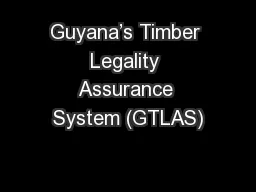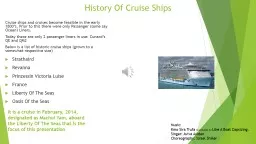PDF-Timber Pricing Branch Quality Assurance Cruise Desig
Author : celsa-spraggs | Published Date : 2015-05-23
1 Cruise Objective Coast Appraisal Manual Interior Appraisal Manual brPage 3br Timber Pricing Branch Quality Assurance 23 22 Cruise Plans mandatory brPage 4br Cruising
Presentation Embed Code
Download Presentation
Download Presentation The PPT/PDF document "Timber Pricing Branch Quality Assurance ..." is the property of its rightful owner. Permission is granted to download and print the materials on this website for personal, non-commercial use only, and to display it on your personal computer provided you do not modify the materials and that you retain all copyright notices contained in the materials. By downloading content from our website, you accept the terms of this agreement.
Timber Pricing Branch Quality Assurance Cruise Desig: Transcript
Download Rules Of Document
"Timber Pricing Branch Quality Assurance Cruise Desig"The content belongs to its owner. You may download and print it for personal use, without modification, and keep all copyright notices. By downloading, you agree to these terms.
Related Documents














